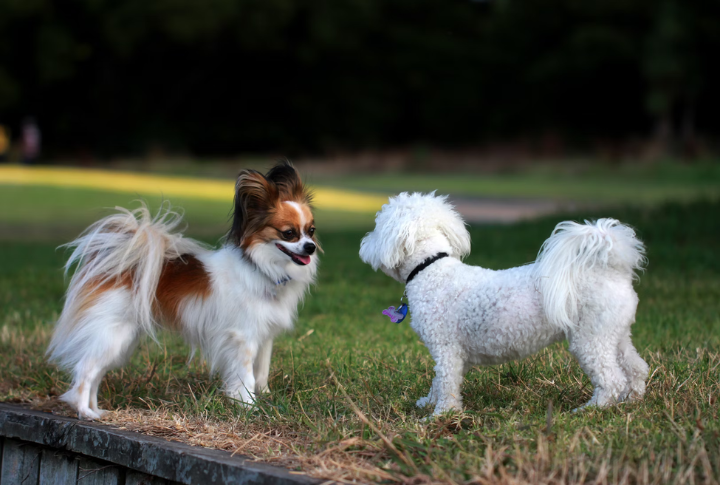15 Tips For Turning Wild Pups Obedient

Your pup’s wild side is totally normal, but chaos doesn’t have to rule your home. All you need to fix these troubles is the right knowledge. With the right guidance, even the rowdiest dog can become your calm, loyal companion and still keep that sparkle. Here are 15 tips that will help shape your dog’s behavior without crushing their spirit.
Master The Name Game

Names should spark joy, not dread. When you say your pup’s name, say it like it’s a prize-winning word. Smile when you say it. Let it make them envision rewards, not reprimands. When they look up at you, reinforce the connection. Make that name worth responding to every time.
Stick To A Routine

What if you couldn’t tell or guess when you’ll have your next meal? Put your dog in your shoes. It’s easier to cope when they can predict things. Feed and walk them around the same times daily. They’ll know what’s coming. That’s where trust builds, and obedience follows naturally.
Use Consistent Commands With Clarity

You say, “Sit,” but your partner says, “Park it.” Both mean the same thing, but your dog will be confused. The commands should be identical every time. Dogs thrive on repetition. Avoid mixing words or tones. Don’t expect precision from chaos. Be the clarity they need.
Reward The Calm Moments

Don’t wait for bad behavior to speak up. Notice the quiet sits and catch the long sighs. A calm, learning dog listens and absorbs your energy. Slip in a soft “good dog” and give a treat for nothing at all. That’s how you shape peaceful habits.
Avoid Reinforcing Bad Behavior

Those barking or jumping dogs happen when they want you to notice them. And when you yell, you acknowledge that behavior. Don’t pay attention to chaos. Turn your back to the jumps and ignore whining. Dogs do what works. If acting out earns no attention, it will eventually stop doing that.
Introduce Leash Manners Early

Start with quiet streets and let them explore while you instruct them gently. Stop when they pull and move when they relax. Of course, mark good behavior with praise. Every outing will become a training session, and every leash tug is an opportunity to refocus and bond.
Play With Purpose

Playtime can be both fun and strategic at the same time. Toss the ball, then ask for a sit before the next throw. Hide toys and practice “stay.” Play is a good way to test focus. With commands, games become drills, but with structure, they become joyful.
Use Food As A Training Tool

Don’t just pour kibble into a bowl; make it matter. Mealtime is a chance to teach. You can ask for a trick and reward with a handful. Break meals into training bursts. Every bite becomes a transaction, and it will build good behavior, one reward at a time.
Set Boundaries From Day One

Day one defines your dog’s universe. Whether it’s allowed on the couch or to beg for scraps matters from the start. Clear lines today prevent confusion tomorrow. Don’t bend the rules “just this once” because dogs need structure. When they know the limits, they stop testing them.
Use The Power Of Eye Contact

Brief, soft eye contact builds connection, not control. When paired with a relaxed posture, it encourages trust, so watch your body too. Let your gaze invite and not challenge them, then reward them for checking in with you. This quiet bond can reduce distractions and reinforce focus.
Teach Impulse Control

You can start with a treat in your hand, then watch your pup twitch with anticipation and wait. The moment they pause, even briefly, reward them. Do it again and add a cue like “Wait” or “Leave it.” Slowly, you’re teaching patience and showing them how to think before acting.
Don’t Neglect Socialization

New sounds and faces help your pup grow emotionally balanced. Without exposure, fear takes root. Early interaction with calm dogs, friendly strangers, and new places matters. Socialized dogs react less and recover faster. Familiarity builds confidence, and confidence leads to better choices.
Be The Calm You Want To See

Energy transfers. Shout, and your pup spikes. Breathe slowly, and they settle. Dogs mirror emotional tones more than verbal ones. Their eyes follow your rhythm, and their pace adjusts to your pause. Lead them with stillness and ease. The calm behavior you want from them should start with you.
End Every Training Session On A High Note

Even if things fall apart midway, always finish with success. Ask for a known trick and deliver the praise so your pup feels accomplished. Small wins fuel future efforts. That closing memory reinforces learning. If the session ends with frustration, reluctance may build. Such an attitude can harm your progress.
Train For The Real World

Training in your kitchen is a great start, but does it work at the park gate or in front of squirrels? Obedience must stretch beyond comfort zones. Add distractions slowly and make scenarios real and relevant. You’re preparing them for life outside and not just for the living room.






